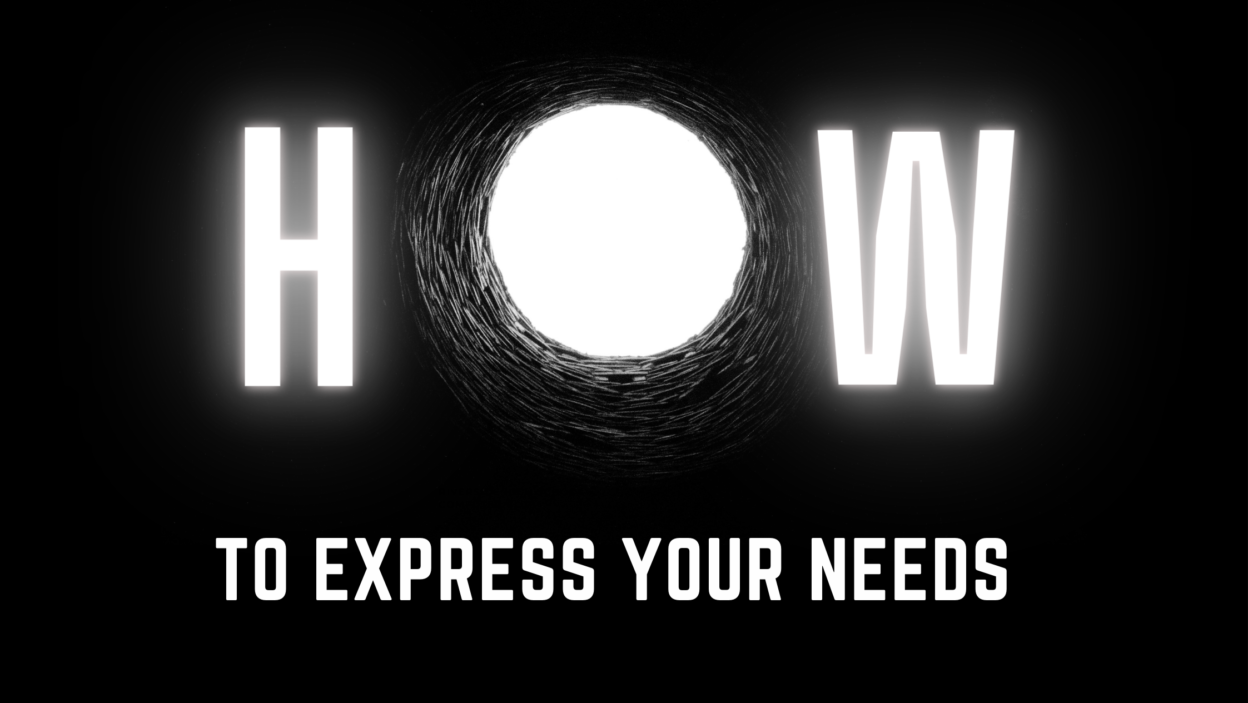According to Jeanie Cave’s Circle Method, expressing our needs in our relationships is the way that we say ‘please’ in our relationships. However, it is not only important that we say please, but also important how we say please. WHAT expression of needs entails has been unpacked in a previous blog (if this seems like gibberish, then it is likely that you have missed the first blog and may need to start there for some context). Here, the HOW of expression of needs will be discussed. To do this, I would like to invite you to consider the following scenarios.
Real-life how to
If I had to come to you and tell you that I was thirsty, what would you bring to me? The usual response is that you would get me a glass of water. You may even be thoughtful and put some ice and lemon in it and serve it with a smile. Now, what would you do if the moment you put it down in front of me, I looked up at you with a frown and said “Oh, but I wanted tea”? Most people would get really angry and say something along the lines of “Well, why the heck did you not say so?”, and rightfully so. (Some would go and make tea, and I would invite these people to think a little more about their expression of capacity).
What about if I had to say to you, “you never make me tea” or “your tea is shoddy anyway” or “you never make me tea so I’m never going to make you tea”. Most would get rightly angry and maybe retort with something along the lines of “Well, make your own bloody tea then”.
Lastly, what would you do if after I said any or all of the above and then also said to you, “While you’re at it, I’ve got some dishes in the dishwasher won’t you just unpack it for me. Oh, and while you’re up won’t you just take the rubbish out, and while you’re out there you might as well pick up the dog poop too”? Most would think, “Now you are pushing it lady”, and understandably so.

What you need to know
Believe it or not, these are all expressions of needs that are just ineffectively executed. If you consider the first scenario, the need was expressed vaguely. It would have been much easier to meet the need if I had been clear. I could have easily done this by saying that I was thirsty and wanted tea. I could have even taken it a step further and said I wanted Rooibos tea, with 1 sugar and milk. Needs are more likely to be met when they are clear.
The second scenario usually leaves us feeling as if our backs are up against the wall. This is because here, the needs are either expressed as blame, criticism or threats. Most of us want to move away from a situation like this, which is counterproductive in the exchange of needs and capacity, which requires a level of emotional closeness. Needs are more likely to be met when they are NOT expressed as blame, threats and criticism.
The third scenario highlights that needs are less likely to be met when they have an uncomfortable impact on the other person. Another example is asking someone afraid of heights to go bungee jumping with you – it’s not likely that it will happen. It is important to note that taking into account the impact a need may have on another is not the same as making assumptions and taking responsibility for the other person’s capacity.
The ever exchanging
We can never know for sure what someone’s capacity might be and so the best that we can do is to show up with our needs (and communicate them as effectively as we know how) without expectation. Knowing that needs and capacity are exchanged all the time and that capacity does not equal rejection when I am stating it to another, I have to believe that it does not equal rejection when someone is stating theirs to me.
While the HOW around expressing needs has received much of the limelight here, there is something to be said about the HOW of expressing capacity. I find that most people are reluctant to express their capacity because they think it requires them to be the ‘bad guy’ and say that ghastly N-word (No). However, stating capacity does not always have to include saying no. For the record, ‘no’ can be a full sentence if you would like it to be. That being said, if you are uncomfortable with this and require a little more structure to support your communication of capacity, these three steps might be helpful.
1) Acknowledge the need.
2) State your capacity.
3) Offer an alternative.
This might look a little like this: “Hi Amy, I know how much this birthday party means to you and I would love to celebrate with you. I am unwell at the moment and not up to being out just yet. Could we arrange a date to celebrate together in about two weeks when I am recovered?”.

It is important to understand that we cannot, NOT communicate. We are constantly communicating, even when we are not using words. Therefore, it is more accurate to think that we need to work towards more effective communication as opposed to more communication full stop. In much the same way, it is really important to consider HOW we express our needs and not just that we express our needs. Perhaps a point of departure might be to consider whether or not you feel as if your needs are satisfied in your relationship? If not, how so? Is it that you don’t know what they are, or is it that you do not express them, or that you do not express them effectively. What could your share be in this dynamic? What is not your responsibility in this dynamic? Perhaps we need to relearn how to say ‘please’.
For further help with self-expression and assistance in fostering healthy relationships, consult with a psychologist on Conrati.

Ashleigh Yaman is a Counselling Psychologist who is passionate about facilitating satisfaction and wellness in relationships, whether it be in relationships with others, or in ones relationships with oneself. She provides individual therapy to children, adolescents and adults; couples therapy; family therapy and; parental guidance therapy.









One Reply to Saying please: looking at the ‘HOW’
Why your child should have a tutor
Conrati nominated as a Top Environmental Consulting Company by Futurology
Mentorship for the Mentee
What is trauma?
How to boost 8 different forms of health
Conrati nominated as a Top Environmental Consulting Company by Futurology
How social media affects mental health
Understanding Bipolar Disorder